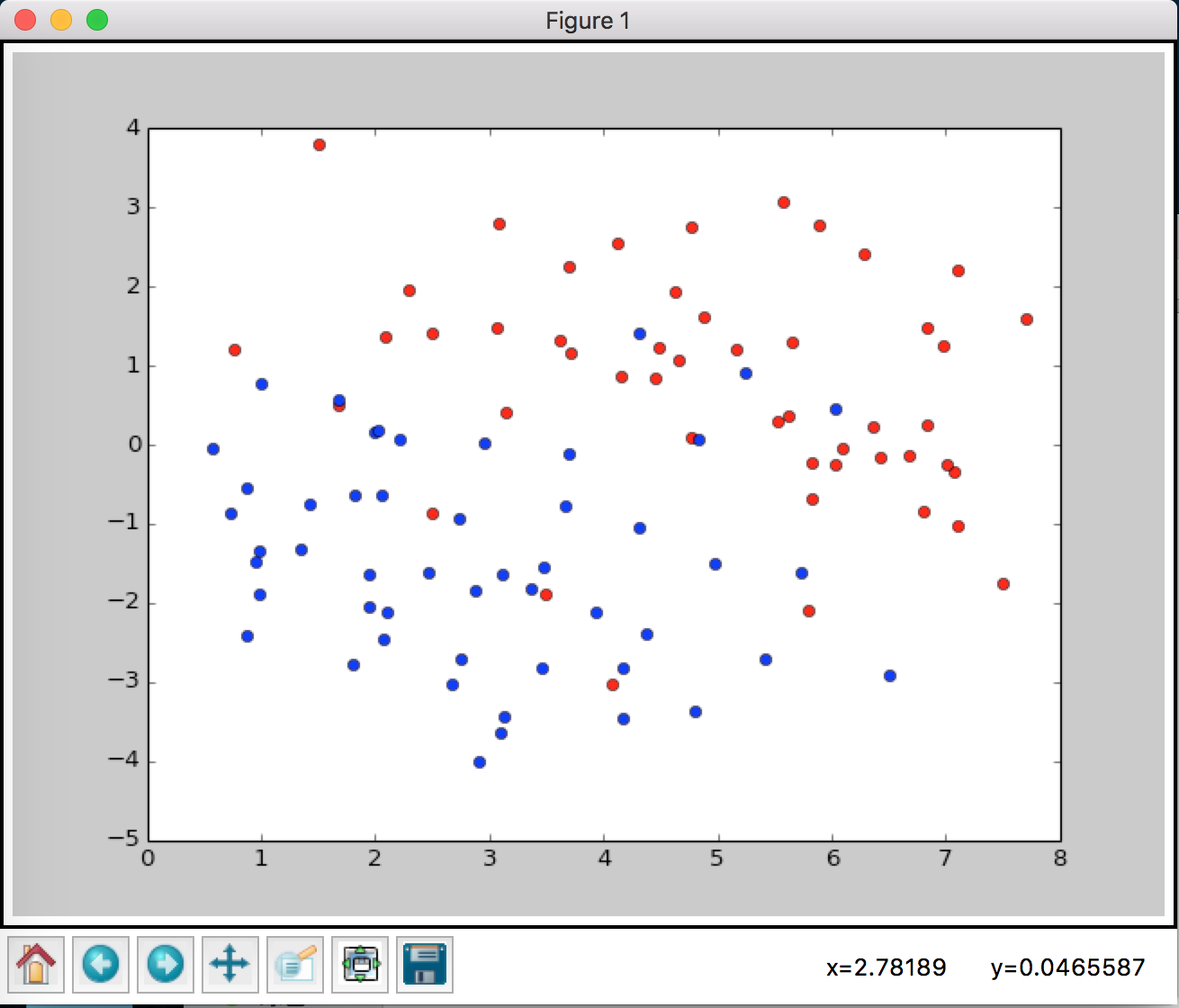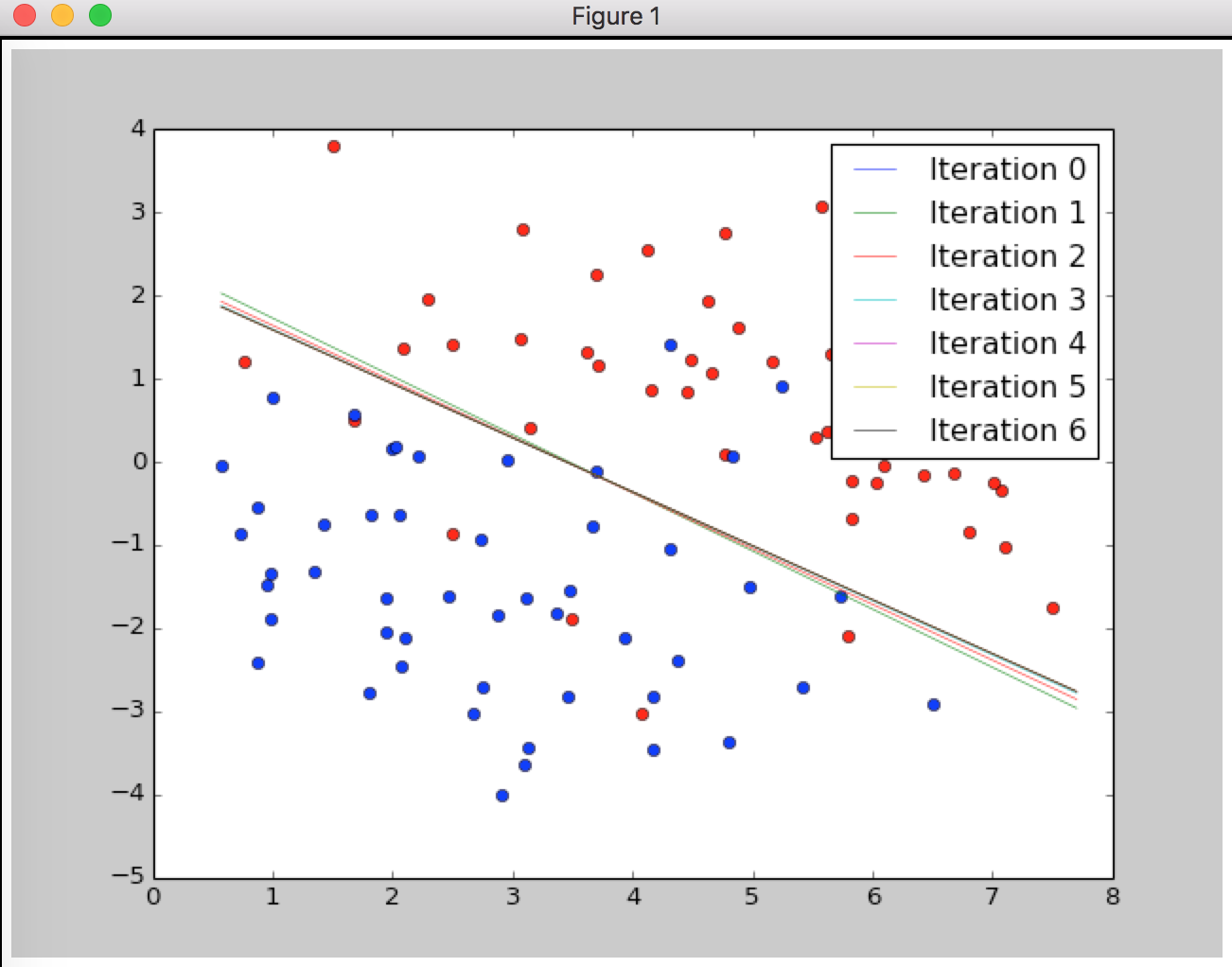Logistic Regression
Consider the averge emprical loss function for logistic regression:
where
and
(a)
Find the Hessian of J(Θ ) and prove it holds true that .
J(Θ) is the gradient.
Since .
is the element of Hessian matrix at row i, col j.
, aka, J(Θ) is convex, no local maximum, and Newton method can be applied to J(Θ).
(b) Newton Method Implementation
Now we implement Newton method classification in Python.
Data are provided here:
Import libraries
import numpy as np
import matplotlib.pyplot as plt
Functions for convenience
def theta_x(theta, X):
return X.dot(theta)
def sigmoid(z):
return 1./(1. + np.exp(-z))
Now two key functions
Function for gradient
def gradient_J(theta, X, Y_vector):
Z = sigmoid(Y_vector * theta_x(theta, X))
return np.mean((Z-1) * Y_vector * X.T, axis=1)
And function for Hessian
def hessian_J(theta, X, Y_vector):
shape_dim = X.shape[1]
zs = sigmoid(Y_vector * theta_x(theta, X))
Hessian = np.zeros([shape_dim, shape_dim])
for i in range(shape_dim):
for j in range(shape_dim):
if i <= j:
Hessian[i][j] = np.mean(zs * (1-zs) * X[:,j] * X[:,i])
if i != j:
Hessian[j][i] = Hessian[i][j]
return Hessian
Process data(Poor Python Coding):
X = []
for val in open('x.txt').read().split():
X.append(float(val))
X = [[x1,x2] for x1,x2 in zip(X[::2],X[1::2])]
X = np.array(X, dtype=np.float128)
Y = []
for val in open('y.txt').read().split():
Y.append(float(val))
Y = np.array(Y,dtype=np.float128)
red = []
blue = []
for i in range(len(Y)):
if float(Y[i])==1.:
red.append(X[i])
else:
blue.append(X[i])
red = np.array(red)
blue = np.array(blue)
Plot data
plt.plot(red[:,0],red[:,1],'ro')
plt.plot(blue[:,0],blue[:,1],'bo')

Add pivit and do initialization
X = np.hstack([np.ones([X.shape[0],1]), X])
theta = np.zeros(X.shape[1],dtype=np.float128)
all_thetas = []
error = 1e9
Updata rule for Newton method:
while not converge {
}
while error > 1e-7:
gradient = gradient_J(theta, X, Y)
Hessian = hessian_J(theta, X, Y)
delta_theta = np.linalg.inv(Hessian).dot(gradient)
old_theta = theta.copy()
theta -= delta_theta
all_thetas.append(old_theta)
error = np.sum(np.abs(theta - old_theta))
Plot the learning process:
for __theta in all_thetas:
print __theta
xs = np.array([np.min(X[:,1]), np.max(X[:,1])],dtype=np.float128)
for i, __theta in enumerate(all_thetas):
ys = (__theta[1] * xs + __theta[0]) / -__theta[2]
plt.plot(xs, ys, label='Iteration {}'.format(i), lw='0.5')
plt.legend(loc='best')
plt.show()
Output:
[0. 0. 0.]
[-1.50983811 0.43509696 0.62161752]
[-2.21834632 0.64372727 0.95944716]
[-2.55431051 0.74137714 1.13493588]
[-2.61847133 0.75979248 1.1707512 ]
[-2.62050954 0.76037096 1.17194549]
[-2.6205116 0.76037154 1.17194674]

Good!